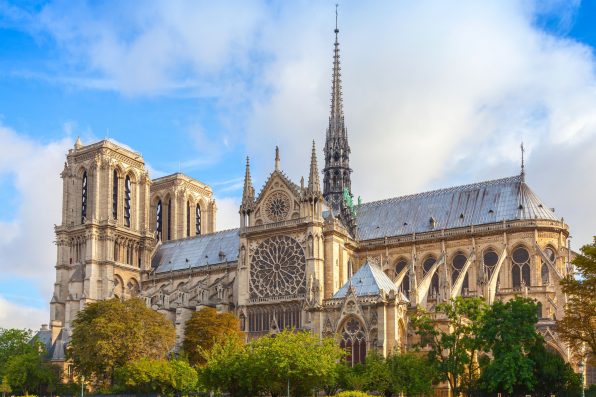A Coffin Buried Beneath The Notre Dame Cathedral Contained The Remains Of A Mysterious Ancient Horseman Who Has Now Been Identified As A French Renaissance Poet

Beneath the ruins of the Notre Dame Cathedral, a lead-lined coffin was unearthed, and it contained the body of an ancient “horseman.”
According to forensics experts, the body has been identified as Joachim du Bellay, the French Renaissance poet.
The preserved remains were found in 2022 during excavations that were conducted after the fire at the cathedral in 2019.
The remains were stored inside a sealed sarcophagus near where the high priest Antoine de la Porte was interred.
The Toulouse University Hospital’s forensic institute performed an analysis of the man’s remains. His skeleton showed signs of bone tuberculosis, chronic meningitis, and wear and tear from riding horses.
“He matches all the criteria of the portrait,” said Dr. Éric Crubézy, a professor of biological anthropology at the University of Toulouse and a research director at the National Center for Scientific Research in France.
“He is an accomplished horseman, suffers from both conditions mentioned in some of his poems, like in ‘La Complainte du désespéré,’ where he describes ‘this storm that blurs [his] mind,’ and his family belonged to the royal court and the pope’s close entourage.”
Crubézy added that du Bellay even rode from Paris to Rome while he had tuberculosis. In his state of health, the journey nearly killed him.
The poet was born in 1522 in Anjou, which is located in western France’s Loire Valley. Later, he moved to Paris and Rome, where he created his works during the French Renaissance.

evannovostro – stock.adobe.com – illustrative purposes only
One of his most famous works was “The Defense and Illustration of the French Language,” in which he argued that French literature was just as expressive and high-quality as the literature of ancient Greece and Rome.
He died in 1560 at the age of 37 after years of poor health. The poet’s remains were believed to be buried at Notre Dame, along with those of his relative and clergyman Jean du Bellay.
Jean’s remains were found under the building, but years of searching did not lead to the discovery of Joachin du Bellay’s tomb.
After the 2019 fire, archaeologists working on the cathedral’s restoration stumbled upon over 100 graves buried beneath it, including Joachin du Bellay’s.
The findings were not a surprise since thousands of people, primarily churchmen, were buried in what used to be a necropolis between the 14th and 18th centuries.
The human remains in the coffins were sealed behind lead to prevent moisture and decomposition.
However, not everyone believes the skeleton belongs to du Bellay. One of the leaders of the excavation, Christophe Besnier, stated that the isotope analysis—which allowed them to determine what the individual had eaten and drank in the area in which he had lived—suggested the man grew up in the Paris or Lyons regions, not Anjou.
Crubézy replied that du Bellay grew up living with Jean du Bellay, who served as the bishop of Paris.
Sign up for Chip Chick’s newsletter and get stories like this delivered to your inbox.
More About:News